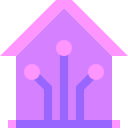
The Future of Home Living: 2023 Smart Tech Trends
In 2023, the concept of home living is being radically transformed by innovations in smart technology. Our homes are evolving into interconnected ecosystems that anticipate our needs, ensure our safety, and streamline everyday tasks. As smart devices become more affordable and integrated, they foster a more intuitive, comfortable, and efficient way of life. This article explores the key trends in smart home technology for 2023, from voice assistants to energy management, offering insights into how these advancements are reshaping our living spaces and daily routines.
Seamless Integration: The Rise of Home Automation
Unified Ecosystems
Unified ecosystems are central to contemporary smart homes. Instead of managing disparate apps and devices, homeowners now benefit from platforms where a single interface connects everything from lights to coffee machines. This allows routines, like “Good Morning” or “Bedtime,” to trigger customized sequences such as adjusting lights, playing soft music, or brewing coffee. Emerging protocols like Matter are accelerating this revolution, ensuring devices from various manufacturers can talk to each other. Seamless integration boosts convenience while simplifying control, reducing the tech learning curve across all age groups and tech-savviness levels.
Intelligent Scheduling and Routines
Advanced scheduling and routines are revolutionizing how households function. Machine learning algorithms analyze user behavior and schedules, adjusting devices based on patterns and preferences. Your smart home might lower blinds as the sun sets, turn on pathway lights as you arrive, or preheat the oven before dinnertime—without manual input. Personalization is key, allowing routines to adapt to changing needs such as holidays, work-from-home schedules, or guests. This automation not only saves time but also optimizes comfort and energy usage, making daily life smoother and more enjoyable.
Voice-Activated Command Centers
In 2023, voice-activated command centers have become the nerve centers of many smart homes. Voice assistants like Alexa, Google Assistant, and Siri are now more intuitive and deeply integrated with household gadgets. They recognize multiple voices, respond contextually, and handle increasingly complex tasks—from compiling grocery lists to coordinating entertainment systems. Enhanced natural language processing allows users to speak naturally when issuing commands, making the interface even more accessible. With rapid advances in AI, these systems act as personal butlers, anticipating needs and acting proactively, fostering a hands-free, ultra-convenient lifestyle.
Smart Security and Safety Innovations
Smart surveillance systems now offer crystal-clear imaging, AI-driven threat detection, and seamless remote access. Cameras don’t just record—they analyze, distinguishing between family members, visitors, or potential intruders. Integration with smart doorbells, locks, and lights enables automated routines, such as illuminating paths upon detection or sending real-time notifications to homeowners’ devices. Enhanced mobile connectivity allows instant response capabilities, from communicating with visitors via two-way audio to contacting emergency services, ensuring comprehensive protection and rapid intervention.

Intelligent Thermostats and Climate Control
Advanced smart thermostats leverage AI and occupancy sensors to manage heating and cooling with unprecedented precision. These devices learn household routines, adjusting the temperature based on presence and preferences, resulting in reduced energy consumption. Integration with weather forecasts and energy pricing enables even finer tuning, allowing systems to pre-cool or pre-heat homes during off-peak hours. By constantly analyzing data, smart climate control not only reduces utility costs but also shrinks the home’s carbon footprint, supporting sustainability without sacrificing comfort.
Smart Appliances and Energy Monitoring
Energy monitoring is now built directly into smart home appliances, providing granular insights into usage and efficiency. Washing machines, refrigerators, and dishwashers equipped with sensors can operate during optimal times, automatically scheduling their cycles to coincide with low-cost energy periods. Some appliances recommend maintenance or adjustments for improved performance, further driving efficiency. Homeowners can track consumption via intuitive dashboards, identifying opportunities for savings and adopting greener habits, often with minimal effort thanks to tailored automation.
Renewable Integration and Home Power Management
In 2023, the integration of renewable energy sources like solar panels and home batteries is more seamless than ever. Smart inverters and management systems balance energy production, storage, and consumption to maximize self-sufficiency. These intelligent controllers can automatically switch between grid and stored power, ensure critical devices remain powered during outages, and even sell excess energy back to the grid. Enhanced analytics empower homeowners to optimize their energy independence, making the transition to green living smoother, smarter, and more cost-effective.
Previous slide
Next slide
